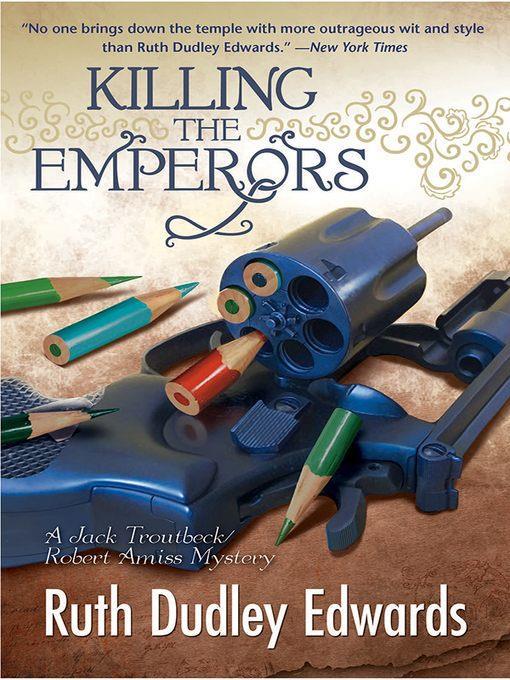
Killing the Emperors
Robert Amiss/Baronness Jack Troutback Mysteries Series, Book 12
کتاب های مرتبط
- اطلاعات
- نقد و بررسی
- دیدگاه کاربران
نقد و بررسی

Starred review from August 20, 2012
British/Irish author Edwards is in top form as she skewers conceptual art ("pretentious, specious, nihilistic rubbish") and its practitioners in her 12th mystery (after 2007's Murdering Americans), this one featuring redoubtable Baroness Ida "Jack" Troutbeck and mystery writer Robert Amiss. When Russian oligarch Oleg Sarkovsky feels betrayed by the London art world, his rage takes a bizarre and dangerous form. He kidnaps Jack and a number of (fictional) critics, educators, dealers, and artists whom he blames for his costly acquisition errors. It may be only a matter of time before Oleg targets real-life notables such as Sir Nicholas Serota, director of the Tate galleries, and artists Damien Hirst and Tracey Emin. Meanwhile, Amiss leads the effort to find and rescue Jack and the other prisoners. Edwards is a master of delightful, biting satire, whether demolishing real or imaginary poseurs.

September 1, 2012
A raucous send-up of the art world's collectors, critics, curators and especially those postmodernists who call themselves artists. Lady Jack Troutbeck (Murdering Americans, 2007, etc.), who has spent the past few weeks cavorting with Russian billionaire Oleg Sarkovsky aboard his yacht and at his estates, has finally decided to ditch the ruthless oligarch when she is summarily hijacked and finds herself in a locked room, sans food, sans water and guarded by an Albanian who eventually agrees to bring her vittles provided she stops her off-key singing. She's escorted into another room decorated with artwork of dung, rotten meat, feeding maggots and so forth, which she's railed against in the past (she calls London's Tate Gallery, now displaying much of this sort of tripe, the Tat Gallery). Then, one by one, members of the postmodern and performance claque are led in. A loudspeaker summons her to yet another room, where a heavily accented voice tells her that there are games to be played, and she must judge who is worst at them. In the dead of night, each game's loser is murdered in an homage to a specific postmodernist, and the corpse is displayed at London sites. While this is going on, and Lady Jack is initiating arguments about every facet of art with her co-captives, her chums on the outside are trying to find her. Scotland Yard, stymied by infighting of its own, is late to take up the homage murders. It will take the work of an Inland Revenue functionary to secure Lady Jack's retrieval. Imagine And Then There Were None written with wicked humor and a major grievance about money, not taste, ruling the art world.
COPYRIGHT(2012) Kirkus Reviews, ALL RIGHTS RESERVED.

October 1, 2012
Baroness Ida Jack Troutbeck is kidnapped, along with an assortment of art critics, consultants, historians, collectors, gallery owners, and artists, all of whom, except Jack, are enthusiastic about the conceptual art movement. Their sociopathic kidnapper, Oleg Sarkovsky, believes each of the people he has snatched has wronged him in some way, and he is determined to exact revenge. While Jack's friends Robert Amiss and Mary Lou Dinsmore work behind the scenes to locate and free Jack, Mary Lou's husband, Detective Inspector Ellis Pooley, handles the official investigation. As some of the kidnap victims begin to show up dead in staged conceptual art installations, the ante is upped dramatically. Jack is the only one of those kidnapped who knows that those who have disappeared from the group are being murdered, but she tries to keep spirits up and protect the others as best she can. Less a mystery, since the reader is privy to events at the location where the victims are held, the novel does deliver suspense as it skewers the conceptual art movement.(Reprinted with permission of Booklist, copyright 2012, American Library Association.)

























دیدگاه کاربران